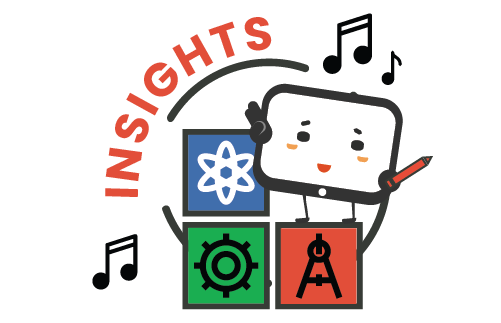My STEM Adventure: Inclusive Educational Gaming for Everyone
Posted on September 27, 2023 in Insights

The development of educational app, My STEM Adventure, illustrates the value of adding diversity and inclusion elements from the beginning of a project. Read the blog post to learn more!

When developing early STEM educational content, you can increase the content’s reach by deliberately creating inclusive features during the pre-production design phase. That’s what accessibility company, Bridge Multimedia and the STEMIE Center did when they partnered to create My STEM Adventure, a free app created to teach STEM concepts to children. The app combines elements of a scavenger hunt and create-your-own-story activities into real world”adventures ” for children and their caregivers to experience. Each adventure allows the children and their caregivers to explore early STEM concepts such as compare/contrast, patterning, cause & effect, and creating & testing hypotheses. After completing each activity, you can print the individualized story of your educational STEM adventure as a PDF or generate it as an e-book (with your voice). From the app’s inception, Bridge and STEMIE understood the importance of designing the game to be engaging, inclusive and available to all children – the first step was making certain that the game had a wide range of accessibility options for children with disabilities.
The disability community uses the term”born accessible ” to describe multimedia content that has been designed from the ground up, to meet digital accessibility standards. This approach was taken during the creation of My STEM Adventure, which features a full range of accessibility features including captioning, integrated audio description, switch access, and eye-tracking technology. The app offers customizable caption size and color as well as the ability to modify sounds and visuals. These functionalities open the game up to the nearly one million pre-school children with disabilities. According to the U.S. Department of Education Office of Special Education Programs, almost seven percent of the pre-school population has a cognitive, sensory, or mobility impairment making them eligible to receive disability services. Bridge Multimedia considers it essential that full accessibility be built into educational gaming to make it available to this population. Bridge created a document called The Disability Mapping Guide for Children’s Digital Game Producers which it provided to the app developers at FableVision, to ensure that My STEM Adventure was born accessible.
According to the National Center for Education Statistics (2023), roughly 3.8 million students, in U.S. schools, are native Spanish-speakers who are not proficient in English. This is an important consideration for designers of digital educational content. To broaden the reach of My STEM Adventure, Bridge made certain it was designed with the option of experiencing the learning activities in Spanish. Knowing that Latinx students benefit from programs and experiences that encourage science identity, Bridge created a young Latina character named Leila Diaz to be the app’s avatar guide. Visually, Leila serves as a science role model for Latina students, specifically – and girls, in general. Leila’s personality, which is fun-loving and enthusiastic, was designed to appeal to all children. Creating interesting, diverse, and engaging characters to deliver a game’s educational content can serve to make the gaming (and learning) a more open and inclusive experience.
Another way of building an inclusive experience into a game is to design it so the gameplay encourages enjoyable, learning interactivity with a parent, sibling, or friend. DeLoach et al (21015) report that parent involvement in educational activities positively affect children’s cognitive development, communication skills, pre-literacy and pre-writing skills, comprehension skills, interaction with peers and adults, and learning. My STEM Adventure was created so that parents and children could explore (and have fun with) science concepts in their every day world. The parent hints provide cues to help parents better understand how to help their child learn during the activity and throughout the day. The book-publishing feature at the end of each activity gives children the opportunity to review the activity at any time and share a chronicle of the adventure with friends and family members €“ which includes more people in the overall experience!
In conclusion, careful planning during an educational game’s pre-production stage can result in expanding the STEM-based product’s reach. Keep inclusion in mind, with deliberate attention to accessibility for players with disabilities. Also, address the Spanish speaking community and the importance of ensuring that the game is culturally relevant to diverse students. The ad-free My STEM Adventure app is available to download through the App Store and Google Play, with no info-sharing required.
Download My STEM Adventure to see how Bridge Multimedia and STEMIE designed an app based on the premise that educational gaming is at its most effective when it is as inclusive as possible.
References:
https://sites.ed.gov/idea/osep-fast-facts-children-3-5-20
National Center for Education Statistics. (2023). English Learners in Public Schools. Condition of Education. U.S. Department of Education, Institute of Education Sciences. Retrieved [date], from https://nces.ed.gov/programs/coe/indicator/cgf.
https://www.ncbi.nlm.nih.gov/pmc/articles/PMC8734380/
DeLoatche, K. J., Bradley Klug, K. L., Ogg, J., Kromrey, J. D., & Sundman Wheat, A. N. (2015). Increasing parent involvement among Head Start families: A randomized control group study. Early Childhood Education Journal, 43, 271-279. https://doi.org/10.1007/s10643-014-0660-7




